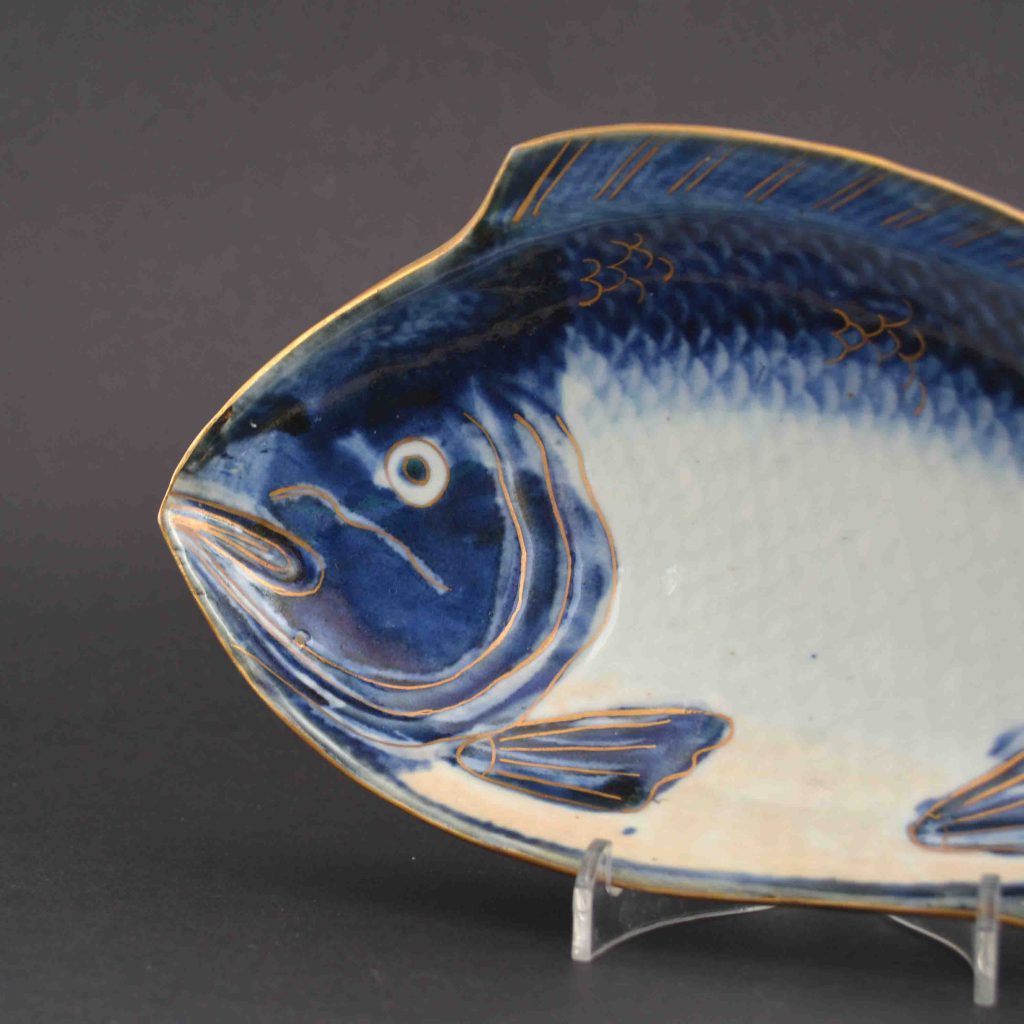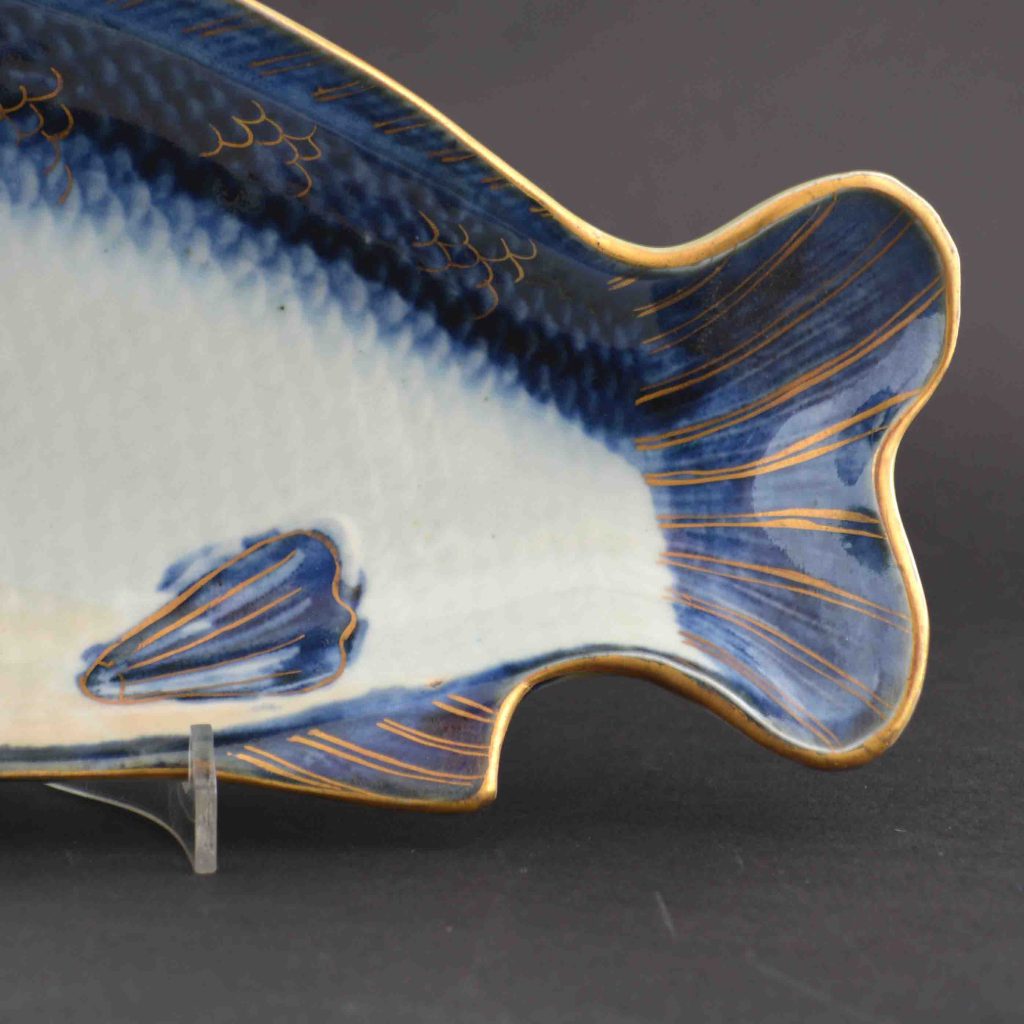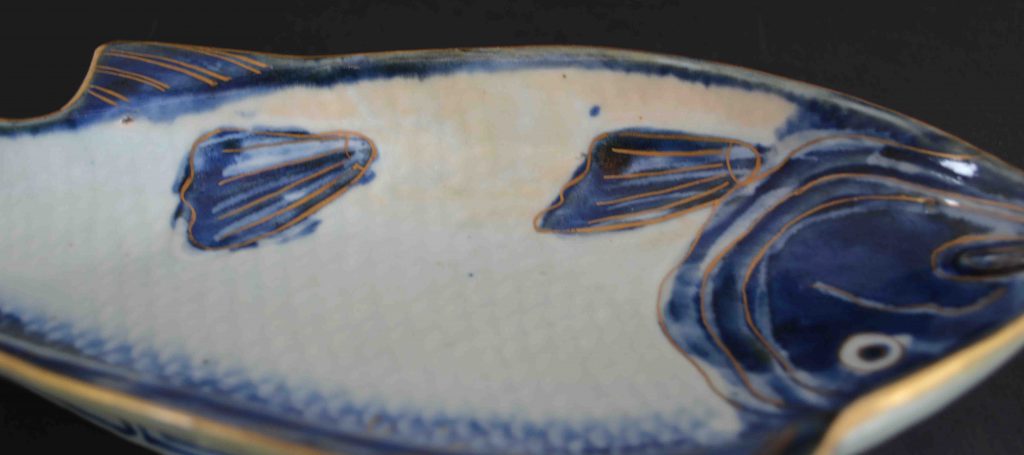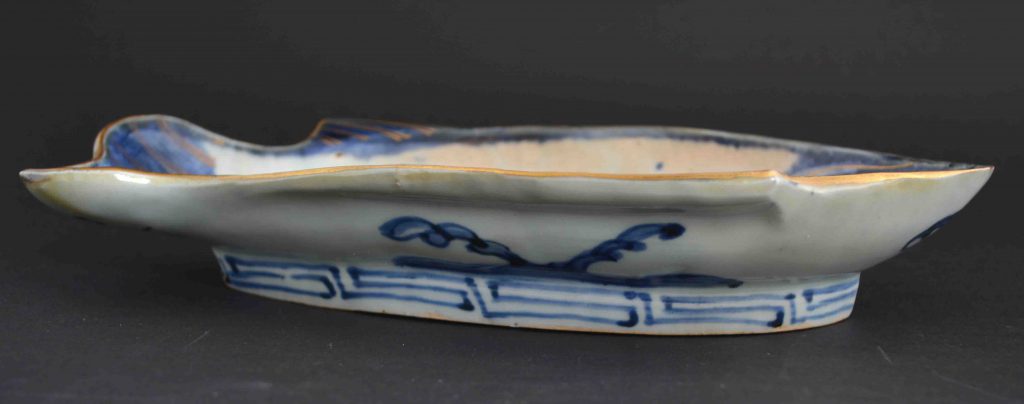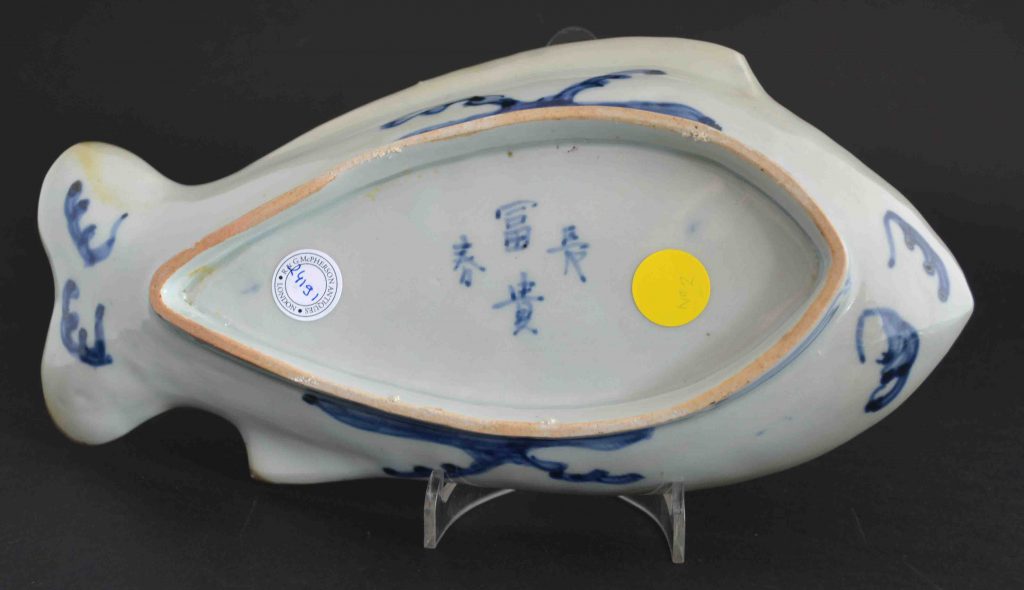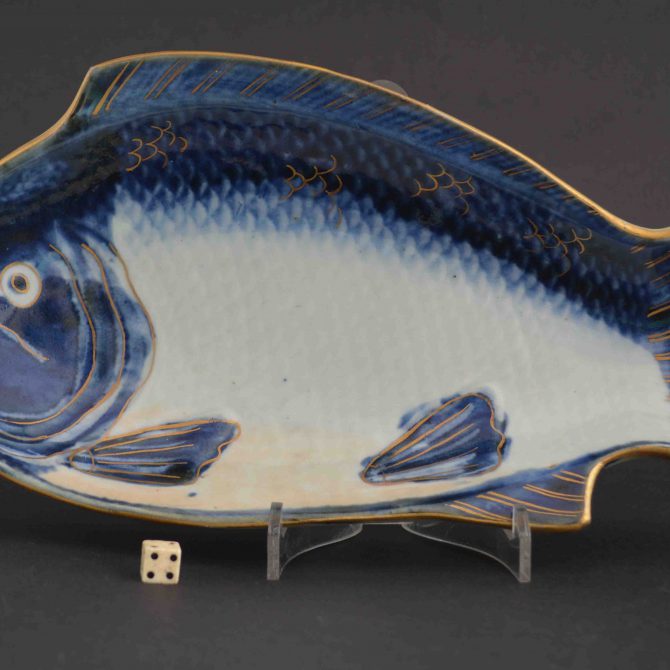
18th Century Japanese Porcelain Dish Modelled as a Sea-Bream.
An 18th Century Japanese Porcelain dish in the form of a sea-bream c.1700-1730. The moulded form is painted in broad brush strokes of dark cobalt blue using a wet brush. The blue has settled between the scales along the paler inner edge. The lower area of the fish has a feint orange lustre wash, gilding has been employed to delineate the gills, eyes, mouth and some of the scales. The base with a Ming four character mark.
SOLD
- Condition
- In excellent condition. A minute chip to the foot rim c.1 x 1 mm. Minor kiln smoke marks to the back.
- Size
- Length : 25.3 cm (10 inches)
- Provenance
- N/A
- Stock number
- 24191
- References
- For a very similar Japanese Arita porcelain fish dish dated to c.1690-1730 see : Complete Catalogue of Shibata Collection (Kyushu Ceramic Museum, 2003) page 325, plate 2542. For a very similar Japanese blue and white porcelain fish dish dated to c.1690-1730 see : Complete Catalogue of Shibata Collection (Kyushu Ceramic Museum,2003) page 325, plate 2542. For a similar Japanese Porcelain dish see : The Catalogue of The Shibata Collections, The Exhibition (1) (Akihiko Shibata and Yuko Shibata and others, The Kyushu Ceramic Museum, 1990) Page 153 plate 397. For anothers Japanese porcelain dishes of this type but with gilding see our `Sold Items` 21748, 21749, 22455. For a Japanese celadon glazed porcelain fish dish dated to c.1750-1780 see our `Sold Items` number 20433.
Information
Sea-Bream in Japan :
The Tai, Sea-Bream is one of the most popular fish in Japan. It is sometimes referred to as the King of Fish, and is in season during Spring. It can be served in a number of different ways, but all the meat, including that from the head is used, the skin is also eaten, The scalded skin is sliced thin and mixed with scallion and ponzu (Ponzu is a citrus juice and vinegar based shoyu dipping sauce. A serving dish like the present example might have been used to offer Tai Sashimi. This dish consists of the bottom half of the fillet and is eaten raw, simply sliced, it might be served with wasabi and or different sauces. The Tai was an attribute of Ebisu one of the seven Gods of Good Fortune, and it was considered particularly auspicious to eat a whole fish at times of celebration in particular on the occasion of a marriage. The name Tai also rhymes with the word Medetai, meaning auspicious. This type of porcelain dish would probably have been produced as a set of five.
